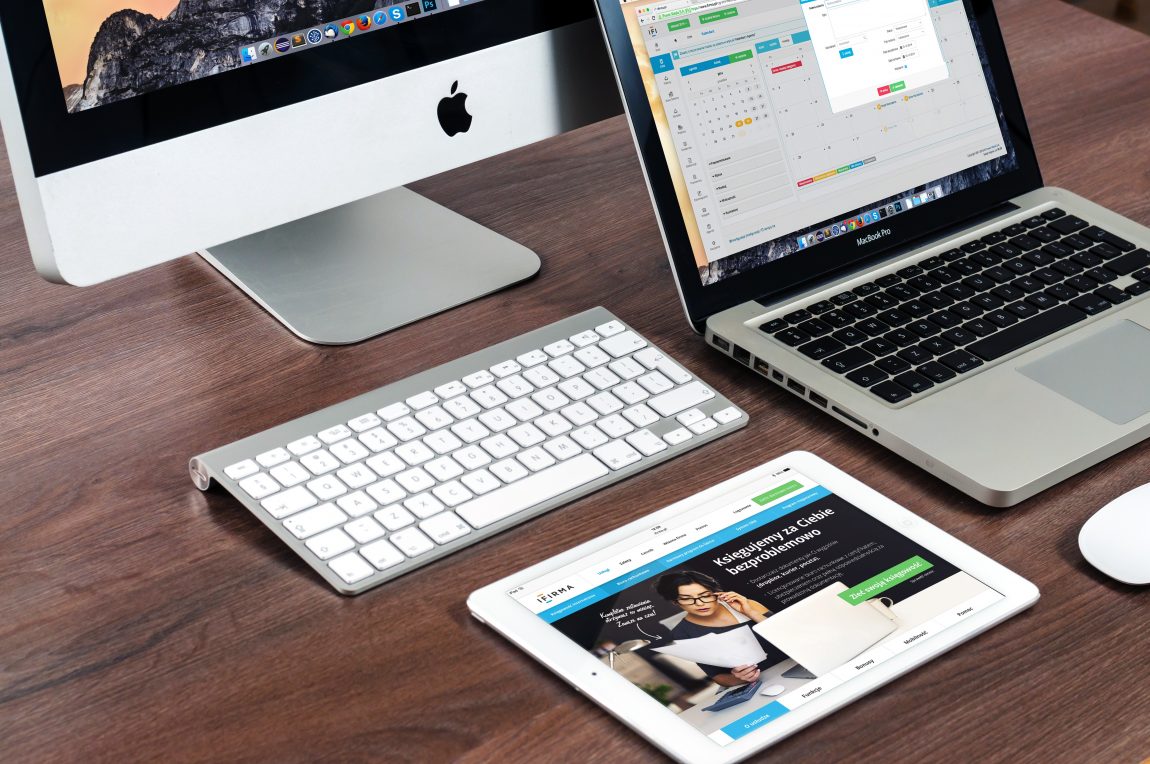by MGB2B

While you might not realize it, LinkedIn for B2B marketing is nothing to sneeze at. In fact, it’s the most dominant social media channel when it comes to B2B marketing. It offers a unique opportunity for brand promotion and lead generation to an audience whose mind is already on business. That alone should make it a must for B2B marketing strategies. Don’t believe it? According to LinkedIn Marketing Solutions, 80% of B2B marketing leads from social media come through LinkedIn. On top of that, 92% of B2B marketers use this platform. What’s more, LinkedIn is responsible for 46% of all social media traffic to B2B websites.
Now that you understand it’s breadth, here’s three ways LinkedIn can work for you:
1. Your Company Page
First and foremost, let’s talk about your main company page. It heightens brand awareness and legitimacy just by the sheer fact of having one. But the more engaging your page, the better it will perform. Here’s where you can share your company story, showcase your executive branding, and create compelling content that establishes trust, authority, and thought leadership. Company and industry news, videos, tutorials, helpful white papers, and infographics all have a home here. And thanks to easy-to-use analytics, you’ll be able to see what is working (and what isn’t) so you can shift your strategy to be more effective.
2. LinkedIn Groups
One of the biggest benefits of LinkedIn for B2B marketing is the group feature. In 2013, 81% of users belonged to at least one group, and that number has only grown. Groups are the epitome of targeted marketing: instead of just having a generic public page, you can develop a niche closed community that connects with individuals with shared interests. Not only are they a great place to foster brand recognition, you can position your company as an industry leader within different sectors. Better yet, groups are a great place to get a micro view of marketing trends and monitor the needs of those you are targeting.
3. LinkedIn Pulse
Pulse gives users daily news related to their specific interests. So if your brand posts about your industry frequently, your stories have a higher chance of being featured on a potential lead’s Pulse feed. This means keeping a regular schedule of consistent, meaningful posts is extremely valuable for increasing your reach – and leads.
Off all the social networks, LinkedIn is the best place to interact professionally with your target audience. Keep in mind, it’s not a place to sell or make deals. Instead, it’s a place to establish your brand as a trustworthy and reputable resource. When you use LinkedIn for B2B marketing, you can attract higher quality leads, create targeted connections, and continually reinforce relationships with prospects and current customers. But like all social media (and marketing for that matter), to succeed, you have to have a strategy in place. If you need help getting off the ground, start by reading this piece on content strategy – or by giving us call.
Continue Reading
by MGB2B

Myth: Social Media Content for B2B Brands Needs to be All-Business
Fact: Social Media is the Perfect Channel to Show Brand Personality
Social media content for B2B brands must revolve around statistics, numbers, and charts. Right? Wrong. While buyers do need practical information, it’s also necessary to humanize your brand. To do so, make sure some of your content resonates with your buyer’s emotions. After all, at the end of the day, it’s a human making purchase decisions. Need help getting started? Here’s three jumping off points to get your creative content up and running:
-
Tell Stories
Storytelling is a simple way for buyers to relate to the brand. This, in turn, strengthens the relationship between brands and buyers. By sharing stories on social media, your company has a chance to develop a personality that strikes a chord with your audience. According to a study at Stanford University, information shared through stories is remembered 22 times more than facts alone. So what kind of stories can you tell? Try a testimonial from a satisfied client. Polish up your brand creation story. Or consider a story that demonstrates how your product or service can solve a problem.
-
Use Humor.
People often assume that social media content for B2B brands is limited to stiff and serious posts. Including humorous content is a great way to get people interested in what your brand is doing. Let’s face it, most people don’t expect B2B brands to be funny. Use that to your advantage. Incorporating humor can be an extremely successful way of getting attention from potential buyers. There are plenty of ways to mix a little humor into your content calendar. Get creative with photos and videos that your brand is sharing. Is there something people find confusing about your brand? Poke fun at yourself (like MailChimp does). Or maybe there’s a common challenge in your industry you can make light of. A little levity can go a long way in ingratiating your brand to your audience.
-
Show the Brand’s Personality.
Developing a personality that is associated with your brand has way more impact than just facts and numbers. Audiences remember personalities over stats. This one’s tricky – it’s easy for B2Bs to fall into the same-old personality traits: committed, quality-oriented, eco-friendly, etc. But who is your brand really? And how does that resonate with your audience? Make yourself memorable. Think about what ultimately motivates your brand, and develop your character from there. Is your brand personality wise? An explorer? A trusted advisor? Do you aim to challenge or inspire? Whatever you feel your brand is, infuse those characteristics into your content (not to mention your ad copy and visuals) and stand out from the pack.
Even though it seems like social media content for B2B brands is limited, it’s just the opposite. It’s an opportunity to showcase just what makes your brand tick. While facts and stats provide the proof, your brand personality will resonate far longer.
Continue Reading
by Emily Swet

The Myth: Simply Having a Website Is Enough
The Truth: How Your Website Is Designed, Written, and Programmed Determines Its Performance
When was the last time you took a critical look at your B2B website design? In today’s market, B2B marketers simply can’t take a “one and done” approach to their web presence. Buyers have become acclimated to today’s standards. Content, searchability, user experience, aesthetics, and responsive design should be the drivers of your site layout. If your website hasn’t been updated in years, or if you haven’t fully fleshed out a recent redesign, we’ve put together a quick cheat sheet to get you up to speed.
5 Essential Building Blocks for B2B Websites
-
Killer Content
Creativity and persuasive insights don’t just work for B2C companies. There is a still a person on the other side of your website making purchase decisions every day. The content on your website has the potential to differentiate you from your competitors and lead your prospects further into your sales funnel. Make sure yours is compelling and directive. And more than anything, check your content for clarity, accuracy, and usefulness to your prospects.
-
Smart SEO & SEM
B2B marketers are getting savvier with search engine optimization and search engine marketing. And so should you. Since the rules are constantly changing, you can’t expect your site to produce results all by itself. Investing in an SEO/SEM specialist or using an agency to maximize your results based on cost efficiency is one of the smartest moves you can make. Use SEO and SEM to drive customers where you want them to go, then analyze their experience so you can make educated tweaks in the future.
-
Intuitive User Experience
Is your site easy to navigate? Where are your visuals placed? Are your call-to-action buttons easy to find? The answers to these questions can mean the difference between a click and a bounce. Your users want to be led, and your user experience dictates where you lead them. A successful user experience follows the natural eye flow pattern across a website. If your site feels clunky or fraught with stopping points, you’re more likely to lose users. Consider a redesign that leads your user to a purchase decision.
-
Engaging Aesthetics
The graphic design of your website has the power to elicit an emotional response as it is the first thing your buyer will see. Smart design works seamlessly with your content to convey a feeling, insight, or solution simply through imagery. You can set the tone right on the home page. The colors, fonts, photography, and illustrations you select can all affect those who visit the site. When done well, design can be a major point of differentiation from your competitors.
-
Responsive Design
Considering Mashable called 2013 The Year of Responsive Web Design, if your site isn’t by now, you’re woefully behind. Responsive sites “respond to” the type of device they are being viewed on, resizing to a more appropriate layout and view. (Think: desktop vs. laptop vs. tablet vs. smartphone). Why is this important? Because your buyers aren’t on their desktops all the time. If they are on the road or in meetings, and unable to really experience your site on their mobile device, you’re likely to lose them – and fast.
Online presence isn’t something that is created overnight. It takes time, research, and a budget to make a website worth having. Yet the initial effort up front can pay you back in spades for the long term. Your ROI can make it well worth it. So with this in mind, it’s worth repeating: when was the last time you took a critical look at B2B website design?
Continue Reading


